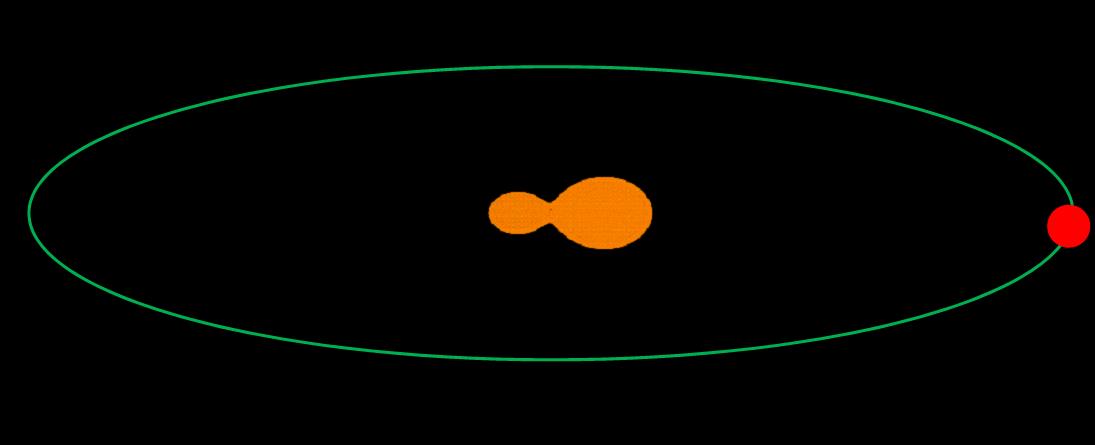Recently, a paper by Professor Shenbang Qian and his student Linqiao Jiang, “SDSS J001641-000925: the First Stable Red-dwarf Contact Binary with a Close-in Stellar Companion”, was published in ApJL. Their work was the first to discover a stable red dwarf contact binary, and that the binary system has another red dwarf as a companion, i.e. that the binary is in fact a triple system.
Over 80% of all stars in the universe are red dwarfs, yet it was not known whether these objects are capable of forming contact binaries like other stars. SDSS J001641-000925 is a short period eclipsing binary which was first observed in 2011, consisting of two red dwarfs with an orbital period of 4 hours and 46 minutes. Photometric and spectroscopic follow-ups by other authors later confirmed it to be a contact binary. Those authors also mistakenly commented that the system is inherently unstable, and will rapidly merge.
To shed light on the nature of SDSS J001641-000925, Professor Shengbang Qian and his research group observed the system for over 3 years using an international consortium of telescopes, and found that the aforementioned binary system is in fact a stable contact binary. They also found a 0.14 solar mass third body in its vicinity, and speculate that the presence of this third body has profound implications for the formation and evolution of the binary.
Information regarding the paper: Qian S.-B., Jiang, L.-Q.; Fernández Lajús, E.; Soonthornthum, B.; Zhu, L.-Y.; Zhao, E. G.; He, J.-J.; Liao, W.-P.; Wang, J.-J.; Liu, L.; Rattanasoon, S.; Aukkaravittayapun, S.; Zhou, X.; Liu, N. P., SDSS J001641-000925: The First Stable Red Dwarf Contact Binary with a Close-in Stellar Companion, 2015, ApJ 798, L42
